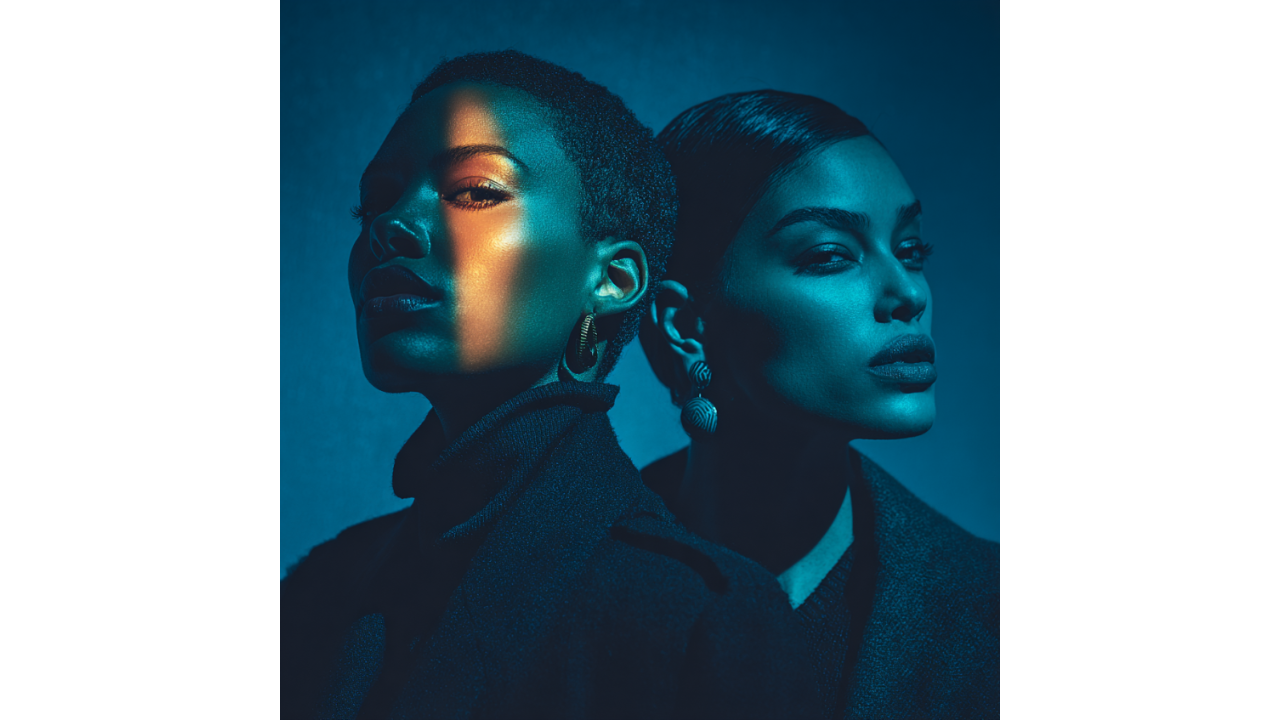Cross-selling in Women's Health: Product Ecosystem Development
Women's health isn't a single problem requiring a single solution—it's an interconnected web of hormonal, reproductive, mental, and physical health...
6 min read
 Women's Health Writing Team
:
Oct 9, 2025 6:53:26 PM
Women's Health Writing Team
:
Oct 9, 2025 6:53:26 PM
-Oct-09-2025-10-49-24-2649-PM.png)
Brand identity isn't static—it's a living entity that must evolve with cultural shifts, consumer expectations, and market dynamics. The brands that thrive don't just react to change; they anticipate it, reshape consumer perceptions, and redefine entire categories.
Four iconic women's brands—Venus razors, Essie nail polish, Tampax feminine hygiene, and Skinnygirl cocktails—each executed masterful brand identity evolutions that transformed them from commodity products into cultural touchstones. Their journeys reveal strategic lessons about positioning, authenticity, and the courage to challenge category conventions.
Here's how each brand evolved, what drove their transformations, and what marketers can learn from their strategic pivots.
We are pro keep-whatever-hair you want... but this brand has had a pretty cool journey.
Before Venus launched in 2001, women's razors were literally men's razors painted pink. The category operated on the insulting "pink it and shrink it" strategy—take male products, make them smaller and feminine-colored, charge more. Marketing focused on hair removal as obligation and emphasized achieving smoothness for male approval.
The messaging was patronizing, the products were inadequate (designed for facial hair, not legs and curves), and the entire category felt like an afterthought in the male-dominated shaving industry.
Venus didn't just create a better razor—they reimagined the entire brand identity around female autonomy, pleasure, and self-care rather than obligation and male gaze.
Strategic Brand Pillars:
1. Product Design Centered on Female Anatomy Venus designed razors specifically for women's bodies—wider blades for legs, rounded heads for knees and ankles, moisture strips, and ergonomic handles for shower use. The message: women's needs are fundamentally different and deserve purpose-built solutions.
2. Marketing Shifted from Obligation to Empowerment Early Venus campaigns showed confident women shaving for themselves, not partners. The tagline "Reveal the goddess in you" positioned shaving as self-care ritual and personal choice, not grooming obligation.
3. Aesthetic Transformation Venus rejected clinical bathroom imagery for sensual, spa-like visuals. Products looked beautiful—designed to be displayed, not hidden. Colors evolved beyond pink to include sophisticated metallics, tropical brights, and luxury finishes.
4. Embracing Body Positivity Recent Venus campaigns feature diverse body types, skin tones, and gender identities. "My Skin. My Way." positioning acknowledges that body hair choices are personal—whether you shave, don't shave, or do something in between.
Venus became the best-selling women's razor brand in the U.S., capturing 55%+ market share. More importantly, they elevated the entire category—women now expect razors designed for their bodies, not adapted from men's products.
Strategic Lesson: Don't accept category conventions that disrespect your audience. Venus succeeded by refusing to treat women as an afterthought and building brand identity around genuine understanding of female needs and autonomy.
Selfishly, we reviewed this 'cuz it's our fave.
Essie Weingarten founded Essie in 1981 as a professional nail polish line sold exclusively in salons. For two decades, the brand identity was straightforward: high-quality, salon-grade polish with sophisticated colors and clever names ("Lady Like," "Mademoiselle").
The brand was respected but limited—professional, exclusive, somewhat elitist. Marketing barely existed beyond salon relationships and editorial placements in beauty magazines.
Essie's evolution into a cultural phenomenon required multiple strategic pivots:
1. Retail Expansion Without Losing Prestige Moving from salon-only to mass retail (Target, CVS, Ulta) risked brand equity. Essie maintained prestige through:
2. Color Names as Brand Identity Essie's color names became central to brand identity—witty, aspirational, culturally relevant. Names like "Chinchilly" (gray), "Mint Candy Apple" (mint green), "Bahama Mama" (coral), and "Ballet Slippers" (soft pink) created emotional connections beyond just polish.
3. Cultural Moment Marketing Essie capitalized on cultural moments:
4. Lifestyle Brand Evolution Recent brand identity expands beyond polish to represent accessible luxury, self-expression, and small indulgences. Marketing shows diverse women in everyday moments—Essie isn't special occasion polish, it's daily confidence in a bottle.
Essie is now the #1 salon nail polish brand and #2 retail brand (after OPI), with estimated annual revenue exceeding $200M. The brand commands premium pricing while maintaining mass appeal—a difficult balance few achieve.
Strategic Lesson: You can democratize luxury without cheapening brand identity. Essie succeeded by maintaining quality, distinctive branding, and aspirational positioning even while expanding distribution. Cultural relevance and clever marketing (color names, celebrity partnerships) created premium perception at accessible price points.
This is pretty epic.
For decades, Tampax marketing treated menstruation as shameful secret requiring discretion. Advertising used blue liquid demonstrations (not blood), whispered about "that time of month," and focused on concealment—small packaging, discrete disposal, invisibility under clothing.
The brand identity was functional, clinical, almost medical. Tampax existed to solve a problem women were supposed to hide, not discuss. Even the name—a combination of "tampon" and "vaginal packs"—felt medicalized and uncomfortable.
Tampax's evolution reflects broader cultural shifts toward period positivity and menstrual equity:
1. Honest, Direct Language Recent campaigns use the words "period," "menstruation," and "vagina" without euphemism. The "Tampax x Radically Honest" campaign featured influencers discussing periods candidly, normalizing conversations previously considered inappropriate.
2. Education Over Concealment Tampax shifted from hiding periods to educating about them:
3. Humor and Relatability Campaigns now embrace period humor—cramping, mood changes, cravings—acknowledging the reality rather than pretending periods don't affect women's lives. The "Outsmart Mother Nature" positioning treats periods as manageable inconvenience, not shameful burden.
4. Inclusive Representation Recent branding acknowledges that not only women menstruate, and not all women menstruate—language shifted from "for women" to "for people with periods," reflecting transgender and non-binary inclusion.
Despite increased competition from sustainable alternatives (period underwear, menstrual cups), Tampax maintains 26% market share in the U.S. tampon category. More significantly, the brand is now associated with period positivity and advocacy, not just tampons.
Strategic Lesson: Sometimes brand evolution requires confronting category taboos head-on. Tampax succeeded by refusing to participate in menstrual shame, using authentic language, and positioning as advocates for menstruators rather than just product manufacturers. When your entire category is built on outdated social conventions, challenging those conventions differentiates your brand.
Love her or hate her - you know her.
Bethenny Frankel launched Skinnygirl Margarita in 2009 with a simple premise: cocktails women could enjoy without guilt, sacrifice, or caloric consequences. The initial brand identity was narrow—low-calorie margarita for weight-conscious women.
The product succeeded (Frankel sold the cocktail line to Beam Suntory for $100M+ in 2011), but the brand identity was limited to a single category and could have easily become a novelty.
Frankel retained the Skinnygirl trademark for non-alcoholic products and expanded it from specific product to comprehensive lifestyle brand:
1. Category Expansion Reflecting Lifestyle Skinnygirl evolved into 20+ product categories:
Each category connects to the core brand promise: stylish solutions for busy women who want it all without sacrifice.
2. Founder as Brand Identity Bethenny herself became inseparable from Skinnygirl brand identity. Her personal brand—ambitious, authentic, unapologetic, entrepreneurial—defines the product line. This is risky (ties brand to individual) but powerful when executed authentically.
3. Community Over Customers Skinnygirl marketing positions products as tools for the "Skinnygirl lifestyle"—a community of women balancing career, family, health, and ambition. The brand identity isn't about products; it's about belonging to a mindset.
4. Strategic Partnerships Collaborations extend brand reach:
Skinnygirl is now a $100M+ brand across multiple categories. More impressively, "Skinnygirl" became cultural shorthand for healthy indulgence and having-it-all mentality—the brand transcended specific products to represent a lifestyle philosophy.
Strategic Lesson: Personal brands can extend far beyond their origin categories if the founder embodies authentic values that translate across product lines. Skinnygirl succeeded because Bethenny's brand—ambitious, solution-oriented, unapologetically female—made sense whether applied to cocktails, jeans, or organizational systems. The key is maintaining brand authenticity while expanding—every product must feel like genuine extension of core identity, not opportunistic cash grab.
1. Challenge Category Conventions Venus refused to accept "pink it and shrink it." Tampax rejected period shame. Both succeeded by questioning industry assumptions disrespecting their audiences.
2. Authenticity Over Perfection All four brands evolved toward authentic representation—Essie's aspirational but achievable luxury, Tampax's honest period discussions, Skinnygirl's acknowledgment of women's complex lives.
3. Cultural Relevance Requires Evolution What worked in 2001 (Venus's "reveal the goddess") evolved to body positivity in 2025. Brands must continuously adapt to cultural shifts while maintaining core identity.
4. Brand Identity Must Reflect Actual Consumer Lives These brands succeeded by understanding how products fit into women's real lives—not idealized versions. Venus acknowledged shaving is personal choice; Essie made everyday moments feel luxurious; Tampax normalized menstrual realities; Skinnygirl validated busy women's desire for indulgence without sacrifice.
5. Expand Thoughtfully Skinnygirl's category expansion worked because each product aligned with core brand identity. Random extensions would have diluted the brand.
Brand identity development isn't rebranding for aesthetics—it's strategic evolution responding to cultural shifts, competitive pressures, and consumer expectations.
These four brands demonstrate that successful evolution requires courage to challenge conventions, authenticity in representation, and strategic clarity about what your brand stands for beyond products.
The companies that thrive long-term don't just sell products—they represent something meaningful, evolve with their audiences, and continuously earn cultural relevance.
Building a brand that evolves with cultural shifts while maintaining authentic identity? Winsome Marketing specializes in brand strategy and content development for women's health, wellness, and lifestyle brands. We help companies develop positioning that resonates authentically with female audiences without resorting to stereotypes or outdated conventions. Schedule a consultation to discuss your brand evolution strategy.

Women's health isn't a single problem requiring a single solution—it's an interconnected web of hormonal, reproductive, mental, and physical health...

Women's health marketing traditionally assumes a narrow demographic: cisgender, heterosexual women. This approach excludes significant portions of...
.png)
Your premium menstrual cup brand emphasizes sustainability and long-term savings. Recession hits, and women stop buying $40 cups in favor of $6...